Trying To Understand The Food Crisis and Artisan Bread In Five Minutes A Day: Corn Bread
This post may contain affiliate links. Please read my disclosure policy.
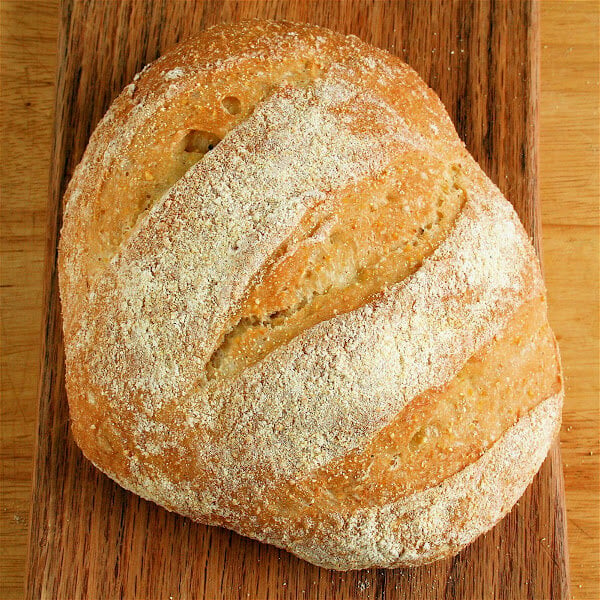
This confused me. How could so many people in the world — 100 million people currently are at risk of joining the one billion people on the planet living on $1 a day — be hungry if there is no overall shortage of food? The answer, I learned, is complicated.
China, India, Europe and the United States are all to blame. Trade officials in these nations (and other wealthy nations), of course, design policies that will protect their farmers. What’s so bad about that? Well, when governments intervene in markets by imposing import tariffs and subsidies, for example, markets do not operate as they should and false equilibriums are reached. This, in turn, leads to market failures — such as food shortages — and the consequences can be dire: misery, malnutrition, starvation.
I’ve been trying to understand this food crisis for the past few months now, and I have summarized below what I have learned. Links to all of the articles I have read regarding this matter can be found at the end of the post (before the recipe.)
The issues:
• Usually food crises are localized, but for the first time in 30 years, food protests are erupting in many places at once: 33 countries (including Haiti, Bangladesh, Cameroon, Egypt, the Philippines, El Salvador and Pakistan) are at risk of social upheaval because of the high food prices.
• Human suffering is vast. Food inflation could push 100 million people into poverty, wiping out all the gains the poorest billion have made during almost a decade of economic growth.
• The era of cheap food is over.
What is causing the high food prices?
1. The growing middle-class in China and India: A half-billion consumers in these countries are increasingly emulating rich Western diets. (They are eating more meat.)
2. High oil costs have sent diesel fuel, fertilizers and farm chemical prices sky-high. Industrial agriculture has become so dependent on fossil fuel — for fertilizer, for pesticide, for processing and transportation. Today it takes 10 calories of fossil-fuel energy to produce one calorie of food energy.
3. Western biofuel programs converting cereals into fuel. This year, one-fifth of the American corn crop will be devoted to Ethanol. High corn prices have led farmers to plant more corn and less soy and wheat, leading to the surge in the price for all grains.
4. Arable acreage is continually being cut back due to environmental regulations, water scarcities and urban development.
5. Government interference in markets. In a perfect world: the response to higher prices is higher output; with farming, however, this isn’t the case. For one, it always takes a season to grow more food (unlike a toy factory, which can respond immediately). And second, by imposing export quotas, price controls, consumer subsidies, export restrictions and lower tariffs, governments muffle signals to farmers and further delay their reaction to price signals. In a free market, imbalances get smoothed out naturally.
What is the solution?
First: Get food and help to the famine-ravaged places. In the short-term, humanitarian aid, social protection programs and and open trade policies will alleviate the suffering. To achieve this, the World Food Program (the world’s largest distributor of food aid) needs an extra $700 million. Though the importation of American and European surplus harvests could damage domestic markets in poor nations, given the widespread food shortages, this is the short-term solution.
Second: Open up trade. Governments need to liberalize markets not intervene. Victor Davis Hanson writes: “The best thing that the United States could now do is to stop interfering with its own farmers, let markets and need determine what they grow and how they farm — and then by such a principled American example, persuade the rest of the world to do the same.”
Long-term solutions:
• Reduce modern agriculture’s dependence on oil. Michael Pollan writes that “agriculture is the original solar technology, and sustainable farmers have shown us how we might put our food system back on a foundation of sunlight. For example, when you take cattle off their typical feedlot diet of grain and allow them to eat grass, those hamburgers put less pressure on the prices of both oil and grain.”
• Pollan continues: “Most of the world’s grain goes to feed animals, not people, and meat is a very inefficient use for that grain — it takes 10 pounds of grain to make one pound of beef. There would be plenty of grain for everyone if we actually ate it as food and didn’t use it to make meat. Reducing world meat consumption — or feeding our food animals differently — would leave more grain for the world’s hungry.
• The Economist asserts that the way to feed the world is not to bring more land under cultivation, but to increase yields, and science, thus, is crucial. (The Economist: The quickest way to increase your crop is to plant more, but in the short run, there is only a limited amount of fallow land. Food increases thus need to come from higher yields.)
Sources: “The Silent Tsunami” and “The New Face of Hunger,” both printed in the April 19th Economist, “Harvesting Money In a Hungry World” by Victor Davis Hanson printed in the August 1st New York Times; “How To Feed The World” by Michael Pollan printed in the May 19th Newsweek, and “The Last Bite: Is the World’s Food System Collapsing?” by Bee Wilson printed in the May 19th New Yorker.
Oh and P.S.: This bread, like all of the other loaves produced from recipes printed in Artisan Bread in Five Minutes A Day, is delicious. As the pictures show, this isn’t the typical, sweet, cake-like creation most often associated with the word “cornbread.”
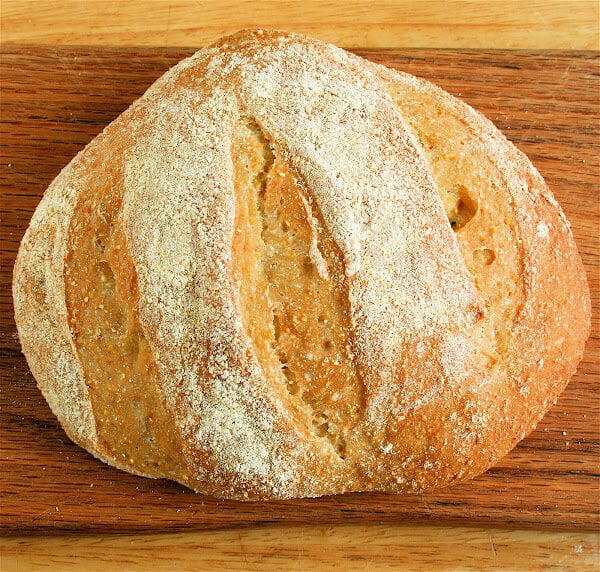
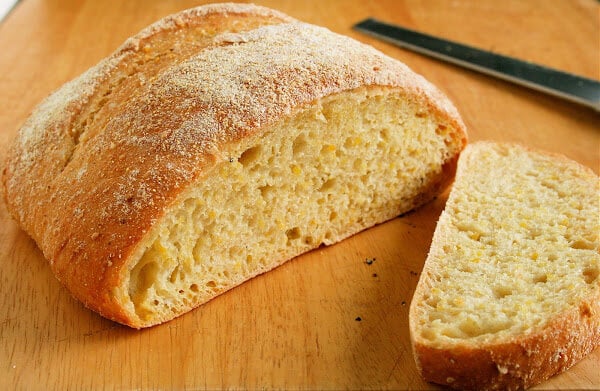
Broa (Portuguese Corn Bread)
- Total Time: 3 hours 45 minutes
- Yield: 4 1lb loaves
Description
From Artisan Bread in Five Minutes A Day by Jeff Hertzberg and Zoë François
Ingredients
- 3 cups lukewarm water
- 1½ T. granulated yeasts (1½ packets)
- 1½ T. kosher or other coarse salt
- 1½ cups stone-ground or standard cornmeal
- 5 cups (22.5 oz.) unsifted, unbleached, all-purpose white flour, measured with the scoop-and-sweep method
Instructions
Mixing and Storing the Dough
- Mix the yeast and salt with the water in a five-quart bowl, or preferably, in a resealable, lidded (not airtight) plastic food container or food-grade bucket. Don’t worry about getting it all to dissolve. (I added the yeast, then the flour and then the salt on top of the flour to avoid killing any of the yeast, but apparently this is unnecessary.)
- Mix in the cornmeal and flour. Mix with a wooden spoon. If necessary, reach into your mixing vessel with very wet hands and press the mixture together. Don’t knead! It isn’t necessary.
- Allow to rise: Cover with a lid (not airtight) and allow the mixture to rise at room temperature until it begins to collapse (or at least flattens on the top), approximately two hours. You can use a portion of the dough any time after this period, but fully refrigerated dough is less sticky and is easier to work with. So, the first time you try this method, it’s best to refrigerate the dough overnight before shaping a loaf.
On Baking Day:
-
Sprinkle the surface of your refrigerated dough with flour. Pull up and cut off a 1-pound (grapefruit-size) piece, using a serrated knife. Hold the mass of dough in your hands and add a little more flour as needed so it won’t stick to your hands. Gently stretch the surface of the dough around to the bottom on all four sides, rotating the ball a quarter-turn as you go. The correctly shaped final product will be smooth and cohesive. The entire process should take no more than 30 to 60 seconds.
-
Place the shaped ball on a cornmeal-covered pizza peel. (If you aren’t planning on baking the bread on a pizza stone, just let the dough rest on a cornmeal covered cutting board.) Allow the loaf (uncovered) to rest on the peel for about 40 minutes.
-
Twenty minutes before baking, preheat the oven to 450ºF, with a baking stone placed on the lowest rack. (If you don’t have a stone, don’t worry.) Place an empty broiler tray for holding water on any other shelf that won’t interfere with the rising bread. (This helps to make the crust crispy, but you’re bread will still be delicious if you omit this step.)
-
Dust the top of the loaf liberally with flour, which will allow the slashing knife to pass without sticking. Make several ¼-inch-deep slashes across the bread. (Again, an uncritical step.)
-
With a quick forward jerking motion of the wrist, slide the loaf off the pizza peel and onto the preheated stone. (Alternatively, butter a Pyrex dish or baking pan and place the bread in the pan.) Quickly but carefully pour about one cup of hot tap water into the broiler tray and close the oven door to trap the steam. Bake for about 30 minutes, or until the crust is nicely browned and firm to the touch. Allow to cool completely, preferably on a wire rack.
- Prep Time: 15 minutes
- Cook Time: 30 minutes
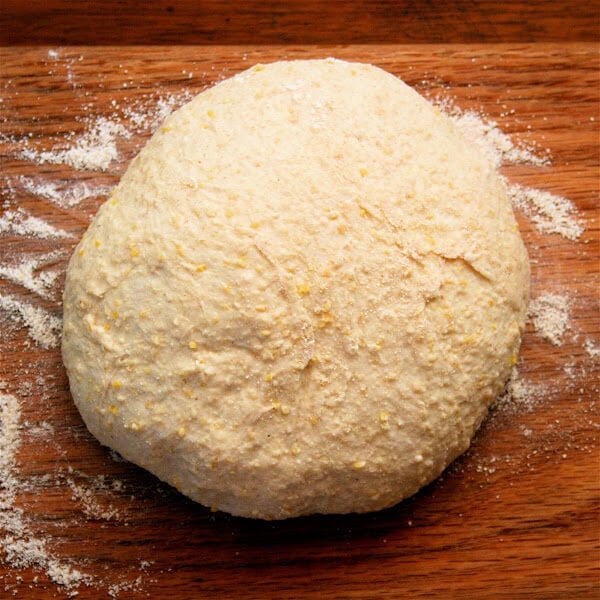
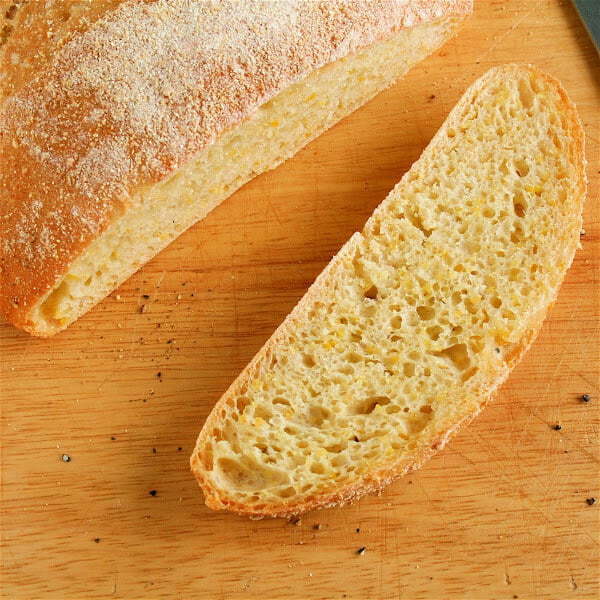
This post may contain affiliate links. Please read my disclosure policy.

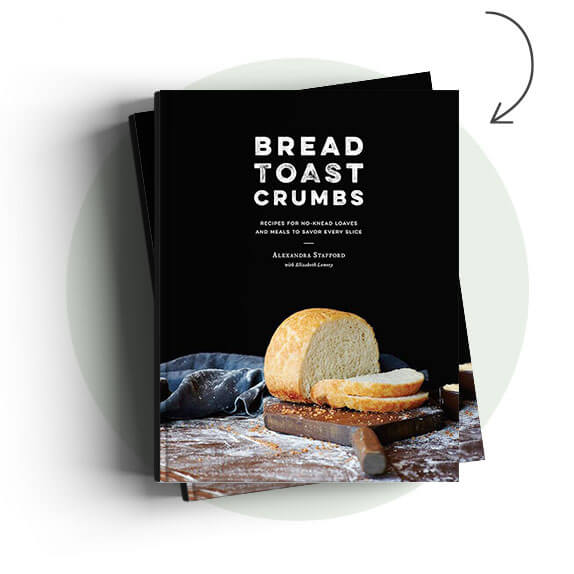

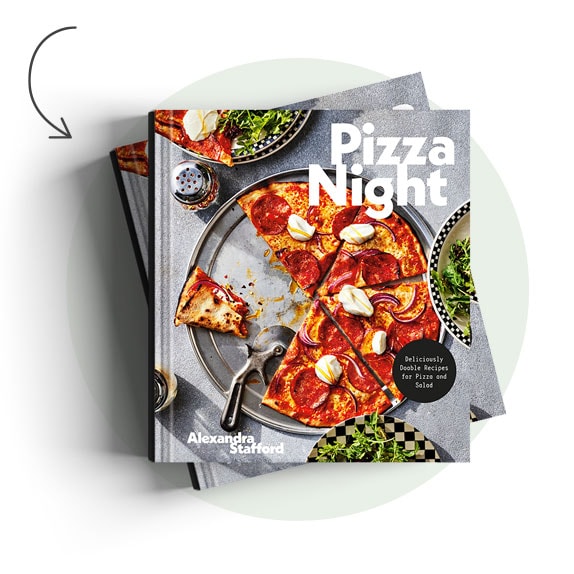

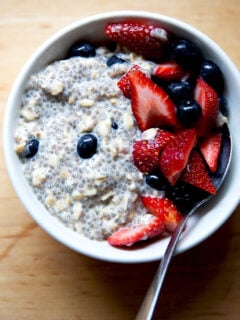
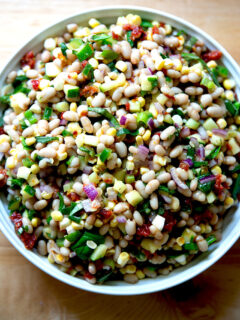
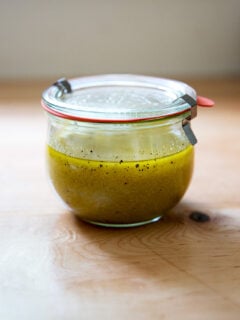

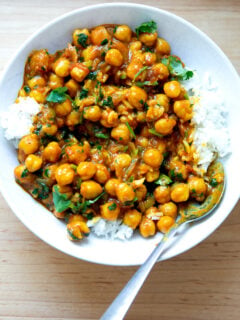

20 Comments on “Trying To Understand The Food Crisis and Artisan Bread In Five Minutes A Day: Corn Bread”
Portuguese Sweet Bread is a fave of our Portuguese family… will have to give this one a shot!
I still have to try this bread. I did the other one the No Knead Bread features in the NY Times and it was really good.
Hey Alexandra! I’m a huge fan of your blog– absolutely everything I make of yours is perfection 🙂 I had one quick question about this recipe… When you ask for 1 1/2 T., do you mean tsp or tbsp?
Thanks so much!!
Thank you, Luci! Captial T = tablespoon, and lowercase t = teaspoon, so in that case I mean, 1.5 tablespoons. Hope that helps. Let me know if there is anything else!
Wow! Did this recipe two times, fabulous. Second time added two jalepino’s small diced and three chopped scallions. I yielded one large round and 4 small loaf pans to give away to friends and neighbors. Great as toast with eggs for breakfast too! Thank you for an excellent recipe that easy to make.
Wonderful to hear this, Robin!
HI, this looks really good, but i’m new to bread baking. If this makes 4 loaves, how long can the dough keep in the refrigerator?
Hi Pat! I think you can keep the dough in the fridge for about 3 days and still get good results as far as getting a good rise goes. If you are new to bread baking, I might suggest starting with this one: My Mother’s Peasant Bread: The Best Easiest Bread You Will Ever Make or this one if you’re looking for a crustier boule-like loaf: Jim Lahey’s Overnight, No-Knead Bread
How many loaves does this recipe make? Can it be halved if it makes more than 1 loaf?
Yes: 1 loaf. And yes, you can halve it and make two smaller loaves.
Does recipe make 4 – 1lb loafs, or one loaf. Confused by reply above.
Hi Paul,
My reply is very confusing. The ingredients as written will give you four 1-lb loaves. In the instructions, I only explain how to bake off one portion for one 1-lb loaf. You can keep the remaining dough in the fridge until you are ready to bake off the remaining laoves.
Hi, thank you for all your great recipes. I have the SAF yeast because I make your other bread recipe weekly and love it. Can that be used in the recipe instead and how?
Thank you,
Alice
Hi Alice! Apologies for the delay here! Yes, use the SAF here. I would use 3 teaspoons of SAF — it’s so powerful.
Hi Ali – about to try this recipe in the UK & just need to check that my interpretation of your ‘all purpose flour’ as our english ‘plain flour’ is correct? That is, no need for ‘strong bread flour’ for this recipe?
Many thanks. J
Hi Joy! I hope I’m getting to you in time. I would actually recommend bread flour given that you are in the UK. Over the years, when I’ve troubleshooted with people from the UK who have found their bread doughs using my recipes to be too wet and soupy, the solution has been to switch to using bread flour as opposed to all-purpose flour. Hope that helps!
Hi Alexandra
If I were to make this using loaf pans would it yield 2 loaves (8x4x2) ? Or 4 loaves using small loaf pans 5x3x2” pans ?
Thank you
Nancy
Hi Nancy! It should fill two 8×4-inch loaves nicely.
I have made this bread several times now and it never fails me. I have baked it on a metal tray, on a preheated stone and in a preheated cast iron roaster with the lid on. It’s always delicious. My tip for those of you who don’t have a pizza peel or haven’t mastered the slide technique. To transfer it into a pan, just place your dough on a piece of parchment paper sprinkled with cornmeal and drag it or lift into your baking vessel when the time is right. It works like a charm.
Great to hear, Kim! Thanks for writing and sharing your tips 🙂